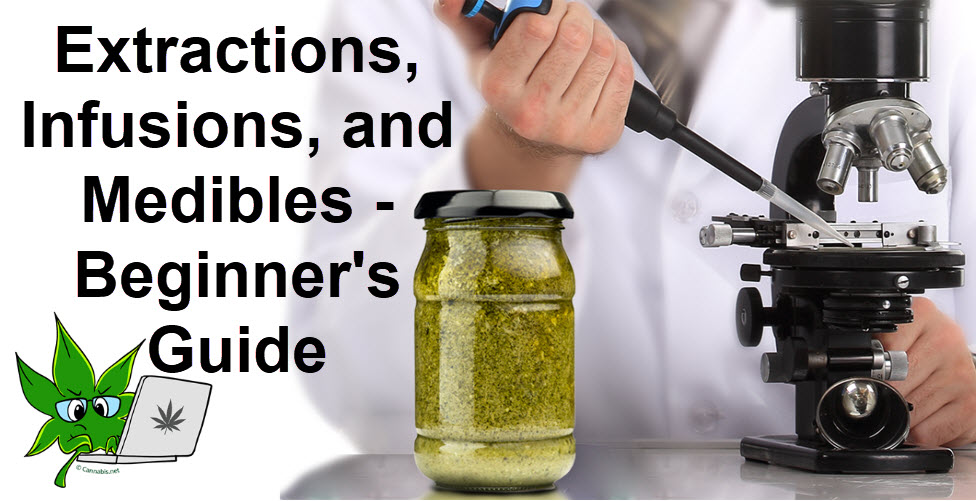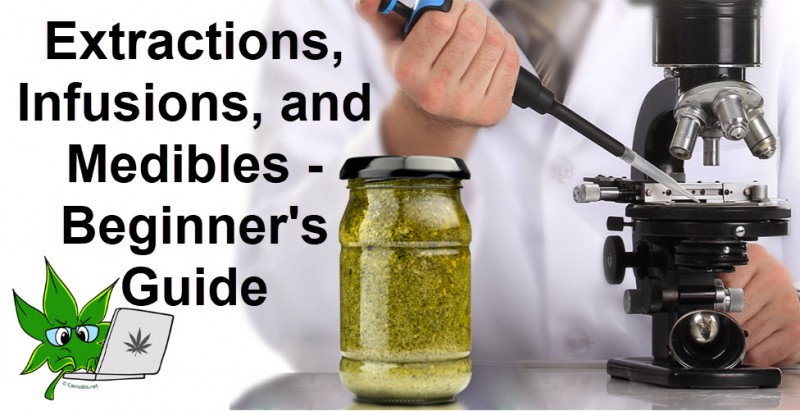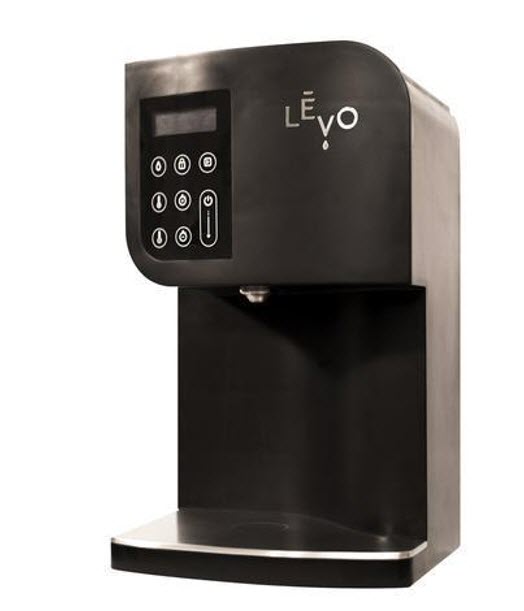An introduction to Extractions, Infusions and Medibles

Many people are turning to cannabis to remedy some of their health problems. For some people, simply smoking or vaporizing cannabis is not an option. These days, you can buy tablets, oils, tinctures and the likes, but what happens when your economy doesn’t allow you to do so regularly?
The fortunate thing about cannabis is – anyone can grow it! And if you can grow it, you can also make your own infusions and extractions to create your very own medibles at home. Today, we’re covering the basics of doing your own extractions and infusions at home.
It all starts with good weed
In order to make a good infusion or extract, it’s important to have quality cannabis on hand. I always recommend spending a bit more on quality weed. If you have a poor quality cannabis, the extract will be of low potency, thus, always look for premium grown weed.
If you can’t afford premium weed, regular cannabis could work, it will just not be as potent as you’d like. You can always check out my other articles on how to grow cannabis at home to get your hands on quality weed. It might take six months, but it’s a sure fire way to get your hands on good reefer.
Then you need to Decarboxylate your Cannabis
One of the principle mistakes that folks do when it comes to extracts is that they skip the decarboxylation process. What this essentially means is that you “Activate” the THC in the weed prior to doing anything to it.
How do you Decarboxylate cannabis? Simply grind up the cannabis you need and place it on an oven-ready tray. Preheat the oven to 145º Celsius (293º F) and place the cannabis inside for 10 mins – 15 mins tops. 10 minutes is a good rule of thumb though.
This process is important because when you have cannabis that isn’t decarboxylated, the THC remains in its acid form which is not psychoactive. Heating it up, it changes the THCa (in its acid form) to Delta-9-THC (psychoactive) which then can be used to infuse or make extractions.
First, let’s take a look at few common extraction methods.
The RSO Method
For those who want to consume cannabis in oil form, the RSO or the Rick Simpson Oil Method is probably your best bet. For this, all you need is a slow-cooker (rice cooker) and some 90-proof alcohol and of course your decarbed weed.
Take your cannabis and mix it with the alcohol, make sure that you mix it well. Then, let it sit there for about an hour to two hours. This will allow the alcohol to break down the resin and crystals on the weed and turn it into a green “soup” of sorts.
Once you’ve completed this step, simply strain the concoction through some cheesecloth into your slow-cooker. At a very low heat, let that soup cook until all the alcohol has evaporated from the mix. What you’ll be left with is a thick black oil.
Take a syringe and suck up every last bit of oil.
To consume it, simply take a drop every day (about the size of a grain of rice) and that is more than enough to sustain your cannabinoid intake per day.
The RSO method is one of the most used extraction/infusion methods because it’s a simple process and doesn’t require too much experience to pull it off. Having said that, it’s important to understand that you’re working with alcohol vapors and heat. This is why it’s never-EVER a good idea to do this method on an open flame, even if you “have a fan blowing away the vapors”.
I recommend a rice cooker because you have temperature control and there is no exposed flame in the process. This drastically reduces the chances of everything going “up in flames”. Be sure to have well-ventilated areas when doing this and you shouldn’t have a problem.
Tinctures
Another extraction method is tincturing your cannabis. In this case, you’ll still follow the decarboxylating steps from above, however, instead of infusing and then evaporating the alcohol, you’ll simply store the decarbed weed in the alcohol for a good 2 weeks.
Once you’re done, you can strain out the plant matter and you have a tincture. With 90-proof alcohol, the tincture should rather be applied topically on scratches and bruises. It acts as a disinfectant and can help with insect bites and so forth. However, if you want to have a tincture you can consume, you can get high-alcohol proof alcohol. There are a few rums out there that can reach to the 60% alcohol content. The higher the better, but make sure it’s designed for consumption.
In this case, simply let the tincture sit for 3 weeks prior to straining. With a dropper, you can titrate your intake depending on your needs. Perfect for anxiety, pain, stress and so forth. Also, having it in a small vile with a dropper makes it incredibly portable.
Coconut Oil
If you’re interested in making medibles, the best would be to make a coconut oil infusion. To do this, simply take the decarbed weed and coconut oil, and on a very low flame, let it simmer for another 10 – 20 minutes or so.
Once the concoction has cooled down a little (while it’s still liquid), then strain it through some cheesecloth or something similar. Take the remaining oil, and place it in a jar. You can use this like regular cooking oil, or add a spoon or two to whatever you are cooking and you’ll be able to infuse any food you want.
The problem with coconut oil is that it has a taste that will be present in all the foods you are cooking, however, it’s a sweet taste, so it’s not too bad.
In terms of potency, you can play around with the cannabis/oil ratio.
I find the following to be a good rule of thumb:
Low Potency – 1:4 (Cannabis/Coconut Oil)
Medium Potency: 2:4
High Potency: 3:4
Bottom line
I believe that cannabis is a human right. Thus, one of the reasons that I write these kinds of articles is to provide people with the necessary tools and knowledge to take their consumption habits into their own hands.
CANNABIS INFUSIONS, READ THESE...
THE CANNABIS INFUSION MACHINE, LEVO, CLICK HERE.
OR..
CANNABIS INFUSED DRINKS, THE NEXT BOON OR BUST, CLICK HERE.








